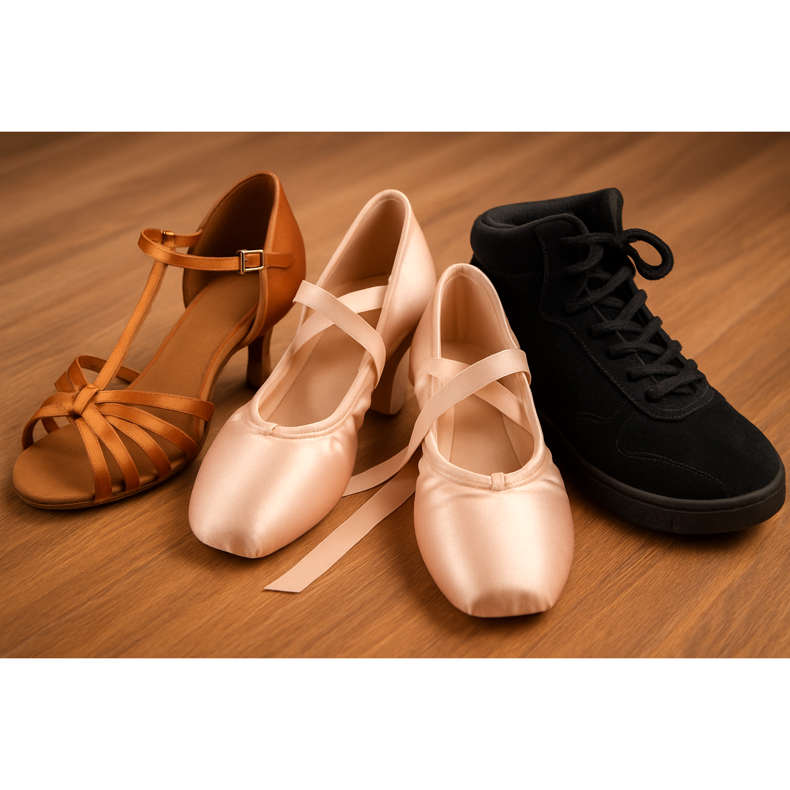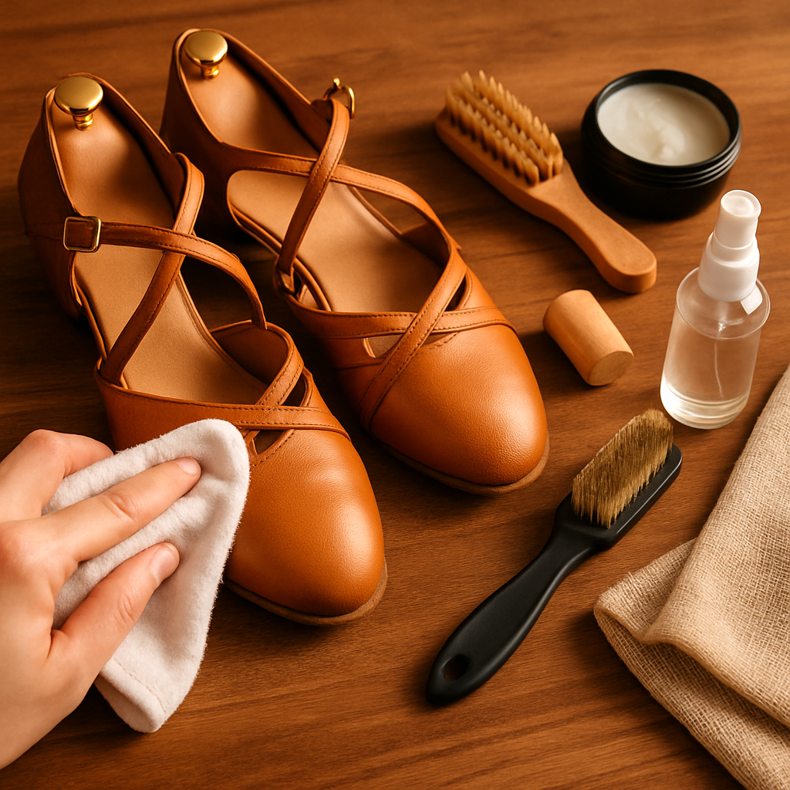
Dance shoes - how to choose the perfect footwear for any dance style 2025
A comprehensive guide to dance shoes for different styles. Learn how to choose the perfect footwear for ballroom dances, ballet, hip-hop and other styles, and how to care for them to serve for years.

Why the right shoes are the key to success in dance
Dance is a form of expression that requires not only passion and skills, but also appropriate equipment. Shoes are one of the most important elements of every dancer's outfit - they affect the safety, comfort and quality of movements.
Regardless of whether you are just starting your adventure with dance or you are an experienced dancer, choosing the right footwear can decide about your progress and pleasure from training. Each dance style sets different requirements for footwear.
In this guide you will learn what shoes will work best in different dance styles, what to look for when buying and how to care for dance footwear to serve you for years.

Types of dance shoes for different styles
Standard and Latin American dances shoes
Emergency dances require specialized footwear, which ensures elegance and functionality:
For women:
• heel height: 5-7.5 cm (standard), 6-9 cm (Latino)
• Belt around the ankle for better stability
• Leather sole that allows smooth speed
• A narrow silhouette emphasizing the foot line
For men:
• Classic low-heeled shoes (2-2.5 cm)
• Leather sole with appropriate slip
• Comfortable cut not restricting movements
• Elegant design matching the outfit
Modern and jazz dance shoes
• Flexible sole enabling the full range of movements
• Low profile and good adhesion
• breathable materials (leather, mesh)
• strengthening in places of the highest consumption
Ballet shoes
• soft ballet shoes made of leather or canvas
• Flexible soles adapted to work on the fingers
• minimal sole for a better sensation of the substrate
• appropriate cut tailored to the shape of the foot

Key features of ideal dance shoes
1. Size and matching
Dance shoes should adhere to the foot like a second skin, but they cannot compress:
• Measure your feet in the evening when they are naturally larger
• Leave 0.5-1 cm space in front of the longest finger
• The width of the shoe should perfectly match the width of the foot
• The heel may not extend during movement
2. Material and construction
• Shank: Natural leather is the best - elastic and breathable
• Sole: Leather or SUEDDE for ballroom dances, hip-hop rubber
• Interior: Lining of leather or antibacterial materials
• Construction: Solid seams and reinforcements in key places
3. Heel heel
The choice of heel height depends on the style of dance and the level of advancement:
• Beginners: 5-6 cm (Latino), 5-7 cm (standard)
• Advanced: up to 9 cm (latino), 6-7.5 cm (standard)
• training: lower heels ensure greater stability
4. Flexibility of the sole
• The sole must bend in the right places
• Test: bend shoe in the hand - should be easily bending under the midfoot
• too rigid sole limits movements and can cause injuries

Adjusting shoes to the needs and conditions
Preparation of new shoes
New dance shoes require proper preparation before the first use:
• Wear them at home for several short sessions
• Apply skin softeners
• Check if they cause abrasions
• Use the shoemaker's services if necessary
Fit to various floors
Wooden parquet:
• leather or SUEDE sole
• Moderate slip
• Avoid rubber soles
Concrete/tiled floor:
• sole with greater adhesion
• You can use special overlays
• Caution with very slippery soles
Complementary accessories
• Finger and heel protectors
• cushioning inserts
• antibacterial sprays
• SUEDE sole care brushes
• Flexible cubes (for shoes without stripes)

Care and maintenance of dance shoes
Daily cleaning
After each training:
• Wipe the shoes with a dry cloth
• Remove dust and sweat from the skin
• Let the shoes dry in a ventilated place
• Do not dried near heat sources
Deep cleaning
Once a week or if necessary:
• Use specialized skin cleaning agents
• Clean the Sede sole with a brass brush
• Apply a nourishing cream to leather parts
• Check the state of heels and possible damage
Storage
• Use wooden rules to keep the shape
• Store in breathable bags
• Avoid moist places
• Do not fold the shoes on top of each other
Soles maintenance
• SUEDE soles regularly brush
• Use a suede renovator if necessary
• Impregnate leather soles with appropriate agents
• replace used soles at the shoemaker

Summary - investment in dance success
Choosing the right dance shoes is an investment in your development and safety on the dance floor. Remember that the quality of shoes directly affects the comfort of training and the quality of the figures.
Do not save on dance shoes - well -chosen shoes will serve you for years, and proper care will prolong their life. Regularly check the condition of your shoes and do not hesitate to inversion into new couples when the current ones begin to wear out.
Regardless of the style of dance you do, the right footwear is the key to achieving full potential on the dance floor. Dance certainly in shoes that perfectly match your feet and style!
Check out our collection of dance shoes and find the perfect pair for your dance style.